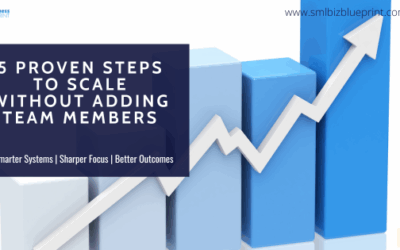The start of a new year is the perfect time to refresh your SEO strategy and set the foundation for a successful 2025.
With search engines constantly evolving and competition for visibility intensifying, staying ahead requires a proactive approach.
Whether you’re looking to boost your rankings, drive more traffic, or optimise your website for the latest trends, these 15 actionable SEO tips will help you kick off the year with confidence and clarity.
Let’s dive in and make 2025 your strongest year yet for SEO success!

Why Starting the Year with Strong SEO Matters
A new year brings new opportunities to elevate your online presence and outperform your competition. Search engines continuously update algorithms, so maintaining an effective SEO strategy is crucial to staying relevant and visible to your audience.
Starting the year with a robust SEO plan ensures you’re capitalising on trends, optimising for user intent, and positioning your business for long-term growth.
Strong SEO boosts your rankings, enhances user experience, increases organic traffic, and establishes your website as a trusted authority in your industry.
By laying the groundwork early in the year, you can maximise results and stay ahead of evolving digital trends.
Tips
- Set Clear Goals for 2025
Define measurable objectives like increasing organic traffic by a specific percentage, improving page load times, or achieving higher rankings for target keywords. - Perform a Comprehensive SEO Audit
Identify weak spots like broken links, outdated content, or missing metadata, and create a plan to address them immediately. - Focus on High-Impact Areas First
Prioritise updates to high-traffic pages and key conversion points to see faster results while working on broader site improvements.
These steps will create a solid foundation for your SEO efforts and set your business up for a successful year.
#1 Audit Your Website for the New Year
An annual website audit is essential for identifying issues that could hinder your SEO performance.
Over time, websites accumulate broken links, outdated content, and technical glitches that negatively impact user experience and search engine rankings.
By conducting a thorough audit at the start of the year, you can address these issues and optimise your site for better performance.
A comprehensive website audit evaluates key factors like page load speed, mobile usability, indexability, and on-page SEO elements.
By resolving problems early, you’ll create a smoother experience for visitors and improve your chances of ranking higher in search results.
Tips
- Use SEO Tools to Uncover Issues
Platforms like Google Search Console, Screaming Frog, and SEMrush can help you identify broken links, crawl errors, and duplicate content that need fixing. - Check Mobile Usability
Ensure your website is fully responsive and delivers a seamless experience across all devices, as mobile-first indexing is now standard for search engines. - Analyse Core Web Vitals
Pay special attention to metrics like Largest Contentful Paint (LCP), First Input Delay (FID), and Cumulative Layout Shift (CLS) to ensure fast and stable page performance.
By prioritising a detailed audit, you’ll eliminate barriers to SEO success and start the year with a cleaner, faster, and more efficient website.
#2 Optimize for Mobile Usability
With over half of all web traffic coming from mobile devices, ensuring your site is mobile-friendly is non-negotiable.
Search engines like Google prioritise mobile-first indexing, meaning they primarily evaluate the mobile version of your site for ranking purposes.
If your site doesn’t offer a seamless experience on smartphones and tablets, you risk losing rankings and potential customers.
Mobile optimisation involves more than just responsive design; it also includes fast load times, intuitive navigation, and eliminating elements that hinder usability, such as intrusive pop-ups.
By focusing on these areas, you can boost engagement and signal to search engines that your site provides an excellent user experience.
Tips
- Test Your Site’s Mobile Performance
Use tools like Google’s Mobile-Friendly Test to identify and resolve issues affecting mobile usability. - Optimise Images and Media
Compress images, use next-gen formats (e.g., WebP), and enable lazy loading to ensure faster load times on mobile devices. - Simplify Navigation
Use a clean, minimal menu design and ensure clickable elements are appropriately sized for mobile screens to improve ease of use.
Investing in mobile usability improvements not only enhances your SEO performance but also creates a better experience for your growing mobile audience.
#3 Update Your Content with Fresh Keywords
Search behaviour evolves constantly, and keywords that worked last year may no longer be as effective. Keeping your content updated with fresh, relevant keywords ensures that it aligns with current search trends and user intent.
By revisiting your keyword strategy, you can capitalise on opportunities to rank higher for terms your audience is actively searching for in 2025.
Updating content doesn’t mean starting from scratch; small adjustments, like refining headlines, meta descriptions, and body text to include trending keywords, can make a significant impact.
Pairing these updates with quality content keeps your site relevant and competitive in the ever-changing digital landscape.
Tips
- Use Updated Keyword Research Tools
Platforms like Google Keyword Planner, Ahrefs, and Ubersuggest can help you identify high-volume, low-competition keywords relevant to your industry. - Focus on Long-Tail Keywords
Incorporate long-tail keywords that reflect specific user queries, as they often drive more targeted traffic and have less competition. - Update Meta Tags and Headers
Refresh your content’s meta titles, descriptions, and H1/H2 tags with newly researched keywords for a quick SEO boost.
Regularly updating your content with fresh keywords ensures it remains valuable to your audience and keeps your site ahead of the competition.
Want the latest strategies to scale your business with AI and automation?
Subscribe to our newsletter and get actionable insights delivered to your inbox every week!
#4 Leverage Voice Search Optimization
With the rise of smart speakers and voice-activated devices, voice search is becoming a dominant way people interact with the internet.
Optimising for voice search ensures your content is accessible to this growing audience and positions your site to capture traffic from conversational queries.
Voice search often reflects natural language, meaning the queries are longer and more specific than traditional text searches.
To succeed in voice search optimisation, your content must provide clear, concise answers and target long-tail keywords framed as questions.
Additionally, featured snippets, which often answer voice search queries, should be a priority for your SEO efforts.
Tips
- Use Conversational Keywords
Optimise for phrases users might naturally say, such as “How do I optimise my website for mobile?” instead of “mobile website optimisation.” - Target Featured Snippets
Create content that directly answers common questions in a clear and concise format, aiming to appear in Google’s featured snippets. - Implement Structured Data
Use schema markup to help search engines understand your content and improve your chances of appearing in voice search results.
By tailoring your SEO strategy to include voice search, you’ll tap into an expanding audience and stay ahead in a competitive digital landscape.
#5 Strengthen Your Local SEO Strategy
Local SEO is essential for businesses aiming to attract customers in their geographic area.
Whether you’re a small business or an enterprise with multiple locations, optimising for local search ensures you show up when potential customers look for services “near me” or in a specific city.
This boosts visibility and increases foot traffic and local brand recognition.
A strong local SEO strategy involves optimising your Google Business Profile, ensuring NAP (Name, Address, Phone number) consistency across platforms, and creating localised content that resonates with your audience.
Doing so signals to search engines that your business is relevant to specific locations.
Tips
- Optimise Your Google Business Profile
Ensure your profile has accurate business information, engaging photos, and up-to-date hours of operation. Encourage satisfied customers to leave reviews. - Use Location-Specific Keywords
Incorporate city or neighbourhood names in your meta descriptions, headers, and content to target local searches effectively. - Build Local Backlinks
Partner with local organisations, events, or blogs to earn backlinks that strengthen your local authority and improve search rankings.
By focusing on local SEO, you position your business as a trusted choice for customers in your area and gain a competitive edge in local search results.
#6 Revamp Underperforming Content
Not all content performs as expected, but underperforming pages represent opportunities rather than failures.
By revisiting and improving low-performing content, you can breathe new life into these assets and boost their search engine visibility.
This approach is often faster and more cost-effective than creating new content from scratch.
Analyse why certain pages aren’t delivering results—whether it’s outdated information, lack of optimisation, or insufficient engagement.
Once identified, make improvements such as adding new data, updating visuals, or refining the structure to better align with user intent.
Tips
- Analyse Performance with Tools
Use platforms like Google Analytics or SEMrush to identify pages with low traffic, high bounce rates, or poor keyword rankings. - Add Fresh Value
Update content with recent statistics, industry trends, or additional examples to make it more relevant and engaging for readers. - Improve Readability
Break up text with subheadings, bullet points, and visuals. Simplify complex ideas to ensure your content is easy to digest and actionable.
Revamping underperforming content can unlock hidden potential, increase organic traffic, and improve overall site performance without starting from scratch.

#7 Focus on Core Web Vitals and Page Speed
Core Web Vitals are essential metrics that measure your website’s performance and user experience.
They focus on loading speed (Largest Contentful Paint or LCP), interactivity (First Input Delay or FID), and visual stability (Cumulative Layout Shift or CLS).
These metrics are critical in search engine rankings and directly impact how users perceive and interact with your site.
Page speed is critical, as slow-loading pages can lead to high bounce rates and poor engagement. By improving Core Web Vitals and optimising page speed, you enhance user satisfaction and send strong signals to search engines about your site’s quality.
Tips
- Enable Caching and Compression
Use browser caching and tools like Gzip compression to reduce load times for returning visitors. - Optimise Images and Videos
Compress images and use next-gen formats like WebP. Implement lazy loading to prioritise content that appears above the fold. - Minimise JavaScript and CSS
Remove unused code and defer non-critical scripts to ensure faster loading times and smoother page interactivity.
Improving Core Web Vitals not only boosts SEO but also provides a better overall experience for your audience, making your website more competitive and engaging.
#8 Harness the Power of Visual SEO
Visual content, such as images, videos, and infographics, is significant in engaging users and improving your site’s SEO performance. Search engines like Google prioritise rich, high-quality visuals that enhance the user experience.
Additionally, optimised visuals can drive traffic through image search and improve the accessibility of your website.
To maximise the impact of visual content, it’s crucial to focus on quality and technical optimisation. By using descriptive file names, alt text, and appropriate formats, you can ensure your visuals contribute to your overall SEO strategy.
Tips
- Add Descriptive Alt Text
Write clear, keyword-rich alt text for images to help search engines understand their content and improve accessibility for visually impaired users. - Use Appropriate Formats
Choose next-generation formats like WebP or AVIF for faster load times without compromising image quality. - Create and Share Video Content
Videos increase the time spent on a page, a positive signal for SEO. Host them on platforms like YouTube or embed them on your site with proper meta tags for better discoverability.
By leveraging visual SEO effectively, you enhance user engagement and make your content more discoverable across multiple search channels.
#9 Create an Internal Linking Strategy
Internal linking is a powerful yet often overlooked SEO technique that helps search engines understand the structure of your website and the relationship between pages.
By strategically linking related content, you guide users to explore more of your site, improve dwell time, and distribute link equity across pages.
An effective internal linking strategy ensures that your most important pages receive the visibility and authority they need to rank higher.
Additionally, internal links create a seamless user experience, helping visitors find the information they’re looking for with ease.
Tips
- Link to Relevant Anchor Text
Use descriptive and keyword-rich anchor text to link to related pages. This helps search engines and users understand the context of the linked page. - Prioritise High-Value Pages
Focus on linking to key pages, such as service pages or cornerstone content, to direct more traffic and authority where it matters most. - Audit and Update Links Regularly
Periodically review your internal links to ensure they’re still functional and relevant, and update them to reflect new or updated content.
Implementing a robust internal linking strategy enhances site navigation, improves user engagement, and strengthens your website’s overall SEO performance.
Ready to scale smarter?
Join Pulse and gain access to expert insights, actionable automations, and AI tutorials that will transform your business operations.
#10 Update Meta Descriptions and Title Tags
Meta descriptions and title tags are crucial on-page SEO elements influencing click-through rates (CTR) and search engine rankings.
These snippets provide a preview of your content to users and search engines, making them a powerful tool for capturing attention and driving traffic.
Outdated or poorly optimised meta descriptions and title tags can lead to missed opportunities.
Ensure your title tags are concise, descriptive, and contain primary keywords. Similarly, craft engaging meta descriptions, highlight the value of your content and include a call to action.
Regular updates to these elements can keep your site competitive and relevant in search results.
Tips
- Incorporate Focus Keywords
Include primary and secondary keywords naturally within your title tags and meta descriptions to improve visibility for targeted searches. - Stay Within Character Limits
Aim for title tags under 60 characters and meta descriptions between 150-160 characters to ensure they display correctly on search engine results pages (SERPs). - Add Action-Oriented Language
Use verbs like “discover,” “learn,” or “find out” in meta descriptions to encourage clicks and boost engagement.
Optimising these elements not only improves your site’s search engine rankings but also enhances its appeal to users, leading to higher CTRs and better overall performance.
#11 Diversify Your Backlink Portfolio
Backlinks remain a cornerstone of a strong SEO strategy. However, quality is more important than quantity, and a diverse backlink portfolio signals trustworthiness and authority to search engines.
Earning links from various reputable and relevant sources increases your site’s credibility and improves its rankings.
A well-rounded backlink profile includes links from blogs, news sites, industry directories, and social media platforms.
It’s essential to avoid low-quality or spammy links, as these can harm your site’s reputation and rankings.
Tips
- Create Shareable Content
Develop high-quality content like infographics, industry reports, or how-to guides that other websites will want to link to as a resource. - Collaborate with Industry Partners
Build relationships with complementary businesses or influencers in your niche to secure backlinks through guest posts or co-branded content. - Monitor and Disavow Harmful Links
Use tools like Google Search Console to identify and disavow spammy backlinks that could negatively impact your SEO performance.
By diversifying your backlink sources, you strengthen your site’s authority and improve its chances of ranking higher in search results.
#12 Develop a Content Calendar for Consistency
Consistency is key to building and maintaining a strong online presence.
A content calendar ensures you publish high-quality, relevant content regularly, keeping your audience engaged and signalling to search engines that your site is active and valuable.
By planning your content, you can align your topics with seasonal trends, industry updates, and overall marketing goals.
A well-structured content calendar helps you stay organised, avoid last-minute rushes, and ensure a steady flow of optimised content that resonates with your target audience.
This strategy boosts traffic, engagement, and SEO performance over time.
Tips
- Align Content with Goals and Keywords
Choose topics that support your business objectives and incorporate relevant keywords to improve search rankings. - Include a Variety of Content Types
Plan for a mix of blog posts, videos, infographics, and social media content to cater to different audience preferences and boost engagement. - Monitor and Adjust Based on Performance
Track the success of published content and adjust your calendar to focus on high-performing formats and topics.
A strategic content calendar streamlines your workflow and ensures your SEO efforts are consistent and aligned with your broader marketing strategy.

#13 Enhance User Engagement with Interactive Elements
User engagement is a critical factor in SEO performance. Visitors interacting with your site signals to search engines that your content is valuable and worth ranking higher.
Incorporating interactive elements like quizzes, polls, calculators, or infographics can significantly improve engagement by making your site more dynamic and appealing.
Interactive elements keep users on your site longer and encourage social sharing, further amplifying your content’s reach and authority.
These tools provide an engaging way for users to explore your content while driving better SEO outcomes.
Tips
- Create Quizzes or Polls
Develop quizzes or polls related to your industry or audience interests. For example, “What Type of Marketing Strategy Suits Your Business?” - Add Interactive Infographics
Design infographics that allow users to hover, click, or explore different data points to create an immersive experience. - Embed Calculators or Tools
Include practical tools like ROI calculators or budget planners that provide immediate value to your audience while boosting engagement.
Integrating interactive elements into your website enhances user satisfaction and improves metrics like time-on-site and bounce rates, which contribute to better SEO rankings.
#14 Track and Analyze SEO Metrics Regularly
A successful SEO strategy requires consistent monitoring and analysis to understand what’s working and where improvements are needed.
By tracking key metrics like organic traffic, bounce rate, keyword rankings, and conversion rates, you gain insights into the effectiveness of your efforts. You can make data-driven decisions to enhance your strategy.
Regularly reviewing your SEO performance allows you to adapt to algorithm updates, audience behaviour changes, and market trends.
This proactive approach ensures your site remains competitive and attracts and retains visitors.
Tips
- Set Up Google Analytics and Search Console
Use these tools to monitor essential metrics, such as organic traffic, user behaviour, and search query performance. - Focus on Actionable KPIs
Track metrics like click-through rates (CTR), domain authority (DA), and page speed scores to identify areas with the highest impact on SEO. - Create Monthly Performance Reports
Regularly compile reports to track progress, identify trends, and adjust your strategy based on real data.
By actively tracking and analysing your SEO metrics, you can refine your approach, maximise results, and maintain a strong online presence throughout the year.
#15 Stay Updated on Emerging SEO Trends for 2025
The digital landscape evolves rapidly, and staying ahead in SEO requires keeping up with the latest trends and best practices.
From advancements in AI-driven search algorithms to the growing importance of video SEO and semantic search, understanding emerging trends will help you adapt and maintain a competitive edge.
By anticipating changes and aligning your strategy with new developments, you can ensure your site remains relevant and visible to your target audience.
Embracing innovation in areas like AI tools, search intent analysis, and immersive content formats positions your business as a leader in the digital space.
Tips
- Follow Trusted Industry Blogs
Keep track of updates from reliable sources like Moz, Search Engine Journal, and Google’s Webmaster Central Blog for the latest insights and algorithm changes. - Experiment with Emerging Technologies
Explore how AI tools, such as ChatGPT or other content optimisation tools, can improve your SEO processes and content quality. - Attend SEO Webinars and Conferences
Participate in events to learn from industry leaders and gain actionable insights into upcoming SEO practices and innovations.
By staying informed about emerging SEO trends, you can future-proof your strategy, adapt to new challenges, and consistently outperform competitors in the ever-changing digital environment.
Conclusion
Starting the new year with a strong SEO strategy is the key to unlocking your website’s full potential in 2025.
From conducting a comprehensive website audit to leveraging voice search optimisation and staying updated on emerging trends, these 15 tips provide a roadmap for boosting your rankings, driving traffic, and enhancing user engagement.
Remember, SEO is an ongoing journey that requires consistent effort and adaptation.
Focusing on the strategies outlined in this post’ll set the foundation for sustained growth and success throughout the year.
Ready to take your SEO to the next level? Implement these tips today and watch your online presence soar.
Have questions or additional tips to share? Leave a comment below, or subscribe to our newsletter for more actionable insights to fuel your digital success!
FAQs
Q1: Why is starting the year with a strong SEO strategy important?
A1: Beginning the year with a solid SEO plan helps you align with updated search algorithms, optimise your site for user intent, and position your business for long-term growth. It ensures your website remains competitive and visible to your target audience.
Q2: How do I identify underperforming content on my website?
A2: Use tools like Google Analytics or SEMrush to track metrics such as low traffic, high bounce rates, or poor keyword rankings. These insights will help you pinpoint content that needs updating or revamping.
Q3: What are Core Web Vitals, and why are they essential for SEO?
A3: Core Web Vitals measure website performance based on loading speed, interactivity, and visual stability. These metrics are critical for enhancing user experience and achieving higher rankings in search engine results.
Q4: How can I optimise my content for voice search?
A4: Focus on conversational keywords and long-tail phrases that mimic natural language queries. Target featured snippets by answering common questions clearly and concisely and use structured data to improve your chances of appearing in voice search results.
Q5: What tools can I use to improve my local SEO?
A5: Google Business Profile is a must-have for local SEO. Ensure your profile is up-to-date with accurate information, encourage customer reviews, and incorporate location-specific keywords in your content and metadata.
Q6: How often should I update my keywords and meta descriptions?
A6: Review and update your keywords and meta descriptions at least quarterly or whenever there are significant changes in search trends, your content focus, or your industry.
Q7: How do I stay updated on the latest SEO trends?
A7: Follow industry-leading blogs, attend webinars and conferences, and experiment with new technologies like AI tools and advanced analytics. Staying informed ensures your strategy evolves alongside the digital landscape.
Other Articles
Transform Your Business with These 13 Marketing Tips for the New Year
9 Proven Content Ideas to Keep Your Brand Active While on Holidays




